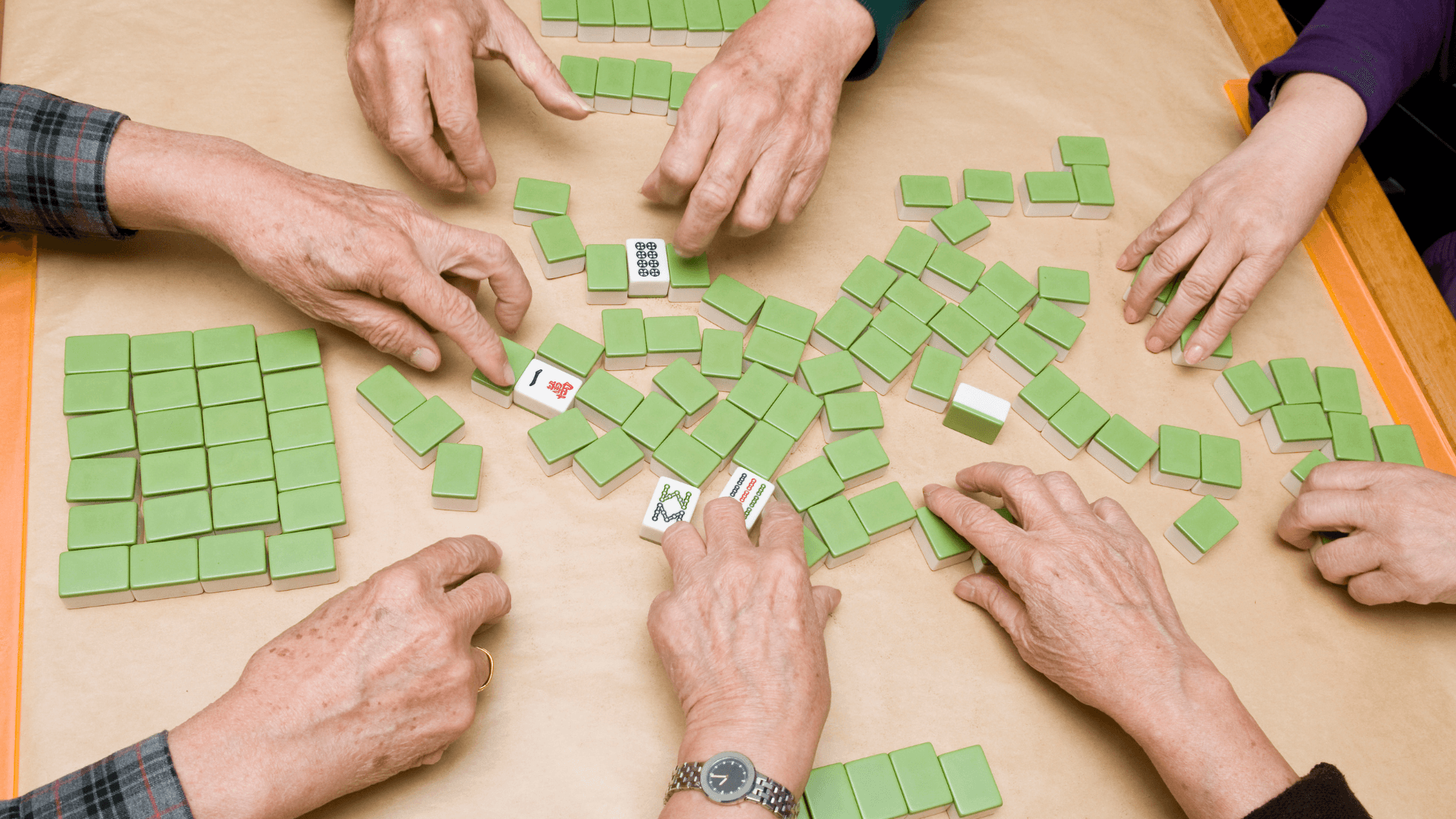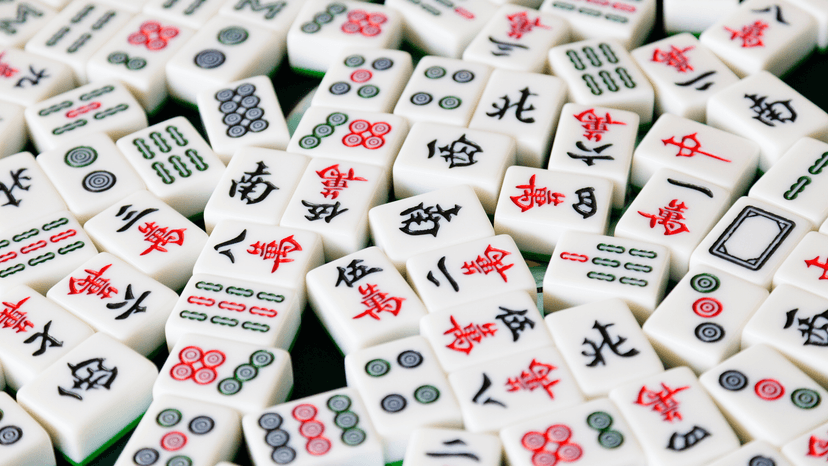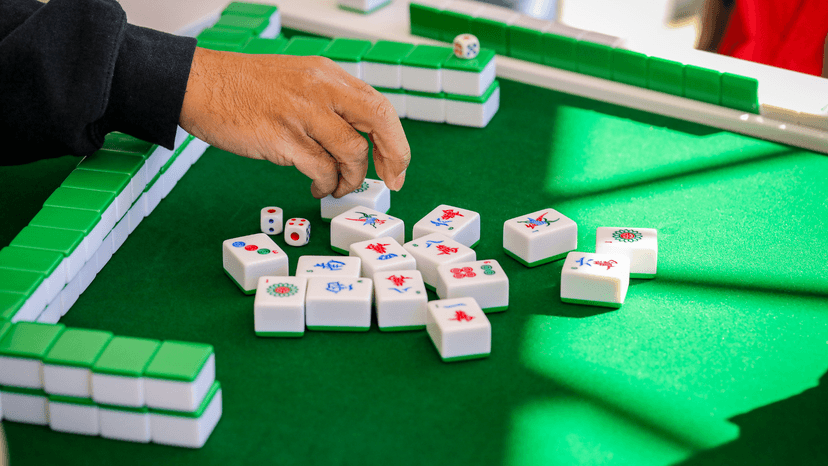Mahjong Tips and Tricks - Things To Remember

Mahjong isn't just a game of chance; it requires players to master rules and strategies. But there's another vital element most players overlook. Once you've learned how to play Mahjong, the next crucial step is to get to grips with all the major tips and tricks to elevate your game.
In this guide, we'll share the Mahjong tips and tricks we know so you don't have to stress about it. Let's dive right in without wasting any more time.
Start with a Winning Strategy
Players should develop a plan before playing the Mahjong game. The moment you see a tile, start strategizing how to proceed. The best initial move is to decide which tiles to keep, which ones to wait for, and which to discard.
- Remember, your rivals are constantly observing what you put on the table.
- For experienced Mahjong players, the discarded tiles offer a clear picture of what's in an opponent's hand, allowing them to tailor their strategy. Skilled players can leverage an opponent's discards to their advantage.
- Be mindful that bluffing isn't always the best approach, as it can backfire and give opponents insight into your hand.
Mastering the Tiles
You can't form melds if you're not sure which symbols go together. If you're not familiar with Chinese characters, this can be a real challenge. Many players opt for Mahjong sets that include Arabic numerals alongside the traditional symbols on mahjong tiles. This way, you won't need to decipher traditional Chinese calligraphy to find the tiles you need.
To Discard or Not to Discard First?
Holding back your first discard is a smart Mahjong strategy, as it doesn't reveal your hand or intentions to opponents. This tactic can give you an early edge in the game.
However, the downside to this move is that it might hint at your Mahjong winning strategy for that round. If opponents are keen to win, they'll notice your hand composition. Even if you could have formed a set with that discard, your opponents will become more cautious with their throws going forward, potentially hindering your ability to form further sets.
- Discarding your first tile early on might suggest you're new to the game, a detail savvy opponents could exploit.
- Don't sweat it if you don't get the leftover tiles from others; feel free to discard them if they don't fit your strategy.
- In Mahjong, players may use a variety of tiles; they simply need to wait for the right moment to assemble a strong hand that will guarantee victory.
Skipping the Gaps
Avoiding gaps between the tiles when arranging the rack is one of the best mahjong tip methods. Because mahjong players are very perceptive, maintaining gaps might reveal a player’s strategy. They are able to quickly identify the hand a player is attempting to put up and their potential actions.
To line up their tiles in combinations and determine their next movements, some new players would create a gap. Yet, it also implies that other players can use their hands similarly. Placing tiles that are not connected and leaving gaps might confuse opponents. But, doing so is only advised when a player is certain they won't become perplexed by their own tactics.
Appropriate Scoring
For new players, it is better to keep the scoring as simple as possible. If not, it could mess up their game, and they might not be able to win. The easiest approach to scoring the game is to award one point to the person who completes the first mahjong, and zero points to everyone else. Add up the points, and the one who wins the most games is declared the winner.
Players can use the other Mahjong scoring guidelines if they have a better grasp of the game. The regulations of the Chinese Official Mahjong Competition are similar to many of them. After that, they can experiment with more challenging scoring systems, such as those for Hong Kong or Ricchi Mahjong.
Point Values of The Tiles
It's also a good idea to remember that pongs have a higher point value than chows. Chows are only useful when there are four of them available to form a mahjong. Yet, making pongs rather than chows may seem counter-intuitive, particularly if a player has experience of playing poker.
- Pong is equivalent to a three-of-a-kind in poker, while chow is nearly identical to a straight.
- While chows are valued more in poker, a player could be inclined to concentrate on them, but mahjong games have distinct hand rankings.
- If new mahjong players learn the various meld combinations and take into account the point values for each, they will make fewer mistakes and advance more quickly.
Hiding the Melds
A player will get more points by keeping the melds a secret until they are prepared to declare mahjong. Therefore, they shouldn't reveal them until absolutely necessary. Mahjong beginners frequently like moving their tiles around to observe which melds they are effectively working on. Players are free to move their tiles about, but they should try to keep them all in a row.
- It is simple for the adversaries to see what a player is working on when full melds are separated, or certain tiles are set aside, so they will modify their mahjong strategy appropriately.
- A player becomes a more difficult mahjong opponent to play against by maintaining a straight row of tiles.
Discarding the Tiles
Although it may be tempting, it is not a good idea to discard any tiles a player has in their hand that don't fit. Instead, a player should focus on the tiles that their rivals are tossing away.
When a player pays close attention to the discard pile, they increase their chances of finding the discards they require and decrease their chances of accidentally discarding them into another player's mahjong hand.
What would be the wisest course of action if a player had many tiles to discard? If you are certain that your opponents won't desire them, it would be best to discard the tile that is most near other tiles that have previously been discarded.
Sticking To A Pair
A pair is a hand that every player should keep close. These are among the most adaptable tiles. A player can adhere to them as pairs or use them to form a four-of-a-kind (Kong), a three-of-a-kind (Pung), or a group of three identical tiles (Chow).
- Don't try to shatter them if they have a pair or two for this reason. In reality, when a player advances in the game, they can turn out to be their winning tiles.
- It's important for a player to promptly implement their mahjong-winning techniques.
Conclusion
To learn mahjong completely, there are some tips and tricks that a player must remember. Without them, a player would never be complete with other players, as many of them observe the game and figure out others’ strategies as well.
FAQ
Are there any strategies for winning at Mahjong?
While Mahjong involves luck, employing certain strategies can improve your odds. Here are a few popular techniques:
- Start with a Plan: Assess your initial tiles and decide on a hand you'll aim for. This helps guide your discards and tile selections.
- Tile Memory: Pay attention to discarded tiles. This gives you insight into what tiles other players are collecting and helps you avoid discarding tiles they need.
- Strategic Discards: Don't just discard randomly. Think about what tiles are safe to discard based on what you've seen and what you suspect other players are holding.
- Build a Strong Foundation: Focus on completing sets (Pungs, Kongs, Chows) early in the game to increase your chances of going out.
What's the key to success in Mahjong?
There's no guaranteed "secret," but a balanced approach is crucial. Be adaptable and adjust your strategy as the game progresses. Avoid passively collecting tiles; patience and calculated decisions are key. Remember to gamble responsibly and set limits for yourself.
What constitutes a winning hand in Mahjong?
A standard winning hand in Mahjong typically consists of four sets (either Chows, Pungs, or Kongs) and a pair.
Is it possible to win with seven pairs in Mahjong?
Winning with seven pairs is possible, but it can be challenging. Since you can't claim tiles from other players to form pairs, you're relying solely on drawing the tiles you need. This limits your options and can make it harder to win.
What is the "Thirteen Orphans" hand in Mahjong?
The Thirteen Orphans (also known as Thirteen Wonders) is a special hand consisting of one of each terminal and honor tile, plus any duplicate. It's a rare and valuable hand, offering a significant payout. The odds of getting this hand are approximately 1 in 2464.
How are Jokers used in Mahjong?
Jokers can substitute for other tiles when forming Pungs, Kongs, or Quints. However, you can't claim a discarded tile to complete a single tile or a pair using a Joker, unless it's the final tile needed to declare Mahjong.







